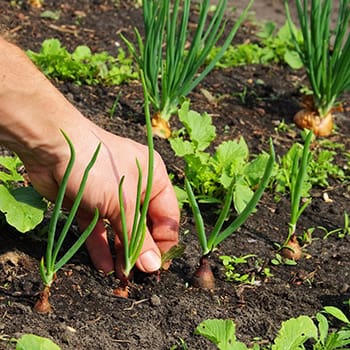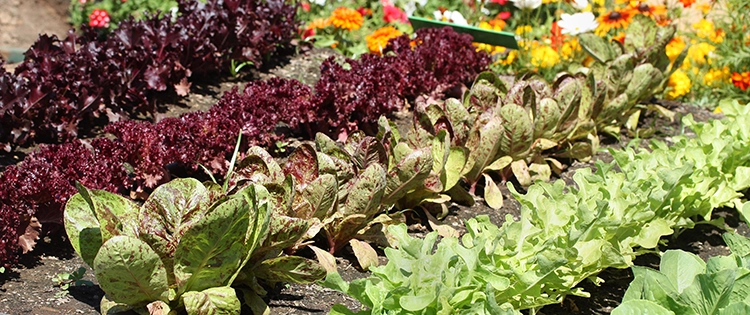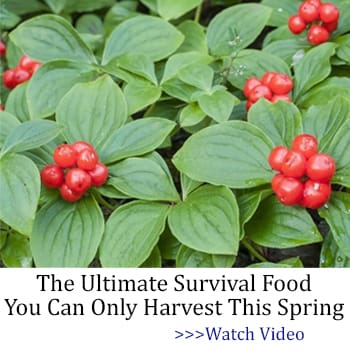As the winter months come to an end, and the promise of brighter, warmer weather approaches, homesteaders worldwide get ready for the spring season. While spring is considered the best time of the year to sow vegetables, it depends on your location.
For example, parts of southern California, New Mexico, and Arizona are extremely hot and dry during the spring, putting young seedlings at risk of dehydration and heat stress. Therefore, you will need to take note of the temperatures in your area before planting.
Nevertheless, regardless of the season you intend to plant your vegetable garden, the key to a successful harvest is in how well you plan. Here are some tips on how to plan your vegetable garden for this spring.
Select Your Vegetables
With so many vegetables to choose from, deciding what to grow this spring can be challenging, so here are some tips to get you started:
Spring Onions
Also known as green onions, and scallions, spring onions are excellent vegetables to plant during the spring months because they are well-suited to cooler temperatures. Additionally, they grow quickly and are ready to harvest between 6-8 weeks after planting.
Squash
Winter squash, yellow squash, and zucchini are just a few of the varieties of squash you can grow. Squash needs a long growing season to reach maturity which is why it is best to start growing them in spring. By planting squash at the start of spring you can take advantage of the warm temperatures and plenty of sunlight during the day to ensure optimal growth.
Carrots
Carrots thrive in temperatures between 60 F and 70 F. They also need a lot of moisture for optimal growth, the spring months provide plenty of rain and cool temperatures allowing carrot seeds to germinate and develop strong roots.
Beetroot
Beetroots are an excellent choice to grow during the spring for several reasons. They grow fast and you can expect to harvest them within 50-70 days after planting. If you are looking for a low-maintenance vegetable, beetroots are ideal especially because in comparison to other vegetables, they are resistant to diseases and pests. Also, if you have limited space, these plants don’t take up much room. You can also grow them in containers.
Lettuce
You can expect to harvest lettuce within 30-60 days after planting. Despite not taking up much space, the seeds yield a lot of produce. It is best to plant the seeds at the start of spring to take advantage of the cooler temperatures.
Radishes
Radishes make a tasty addition to salads, adding a flavorsome fiery crunch to your meal. To grow the most delicious radishes, keep the soil moist to prevent the roots from splitting. Watering your radish plants consistently will ensure you have plenty of tasty radishes to harvest.
Spinach
While all gardeners know they must water their vegetable plants, some are more important than others. It is essential that you never let the soil dry out when growing spinach or they will bolt and start producing seed. When this happens, the leaves become very bitter making for an extremely unpleasant taste. Also, you will need to thin out seeds that have been directly planted into the ground, do this when the plants start touching each other.
Prepare the Soil
Soil preparation is essential for creating the healthy environment required for maximizing the growth potential of your vegetables. Here are some tips to help you prepare your soil:
Clear the Area
Get rid of any rocks, weeds, debris, and anything else that can hinder the growth of your vegetables. Weeds are especially problematic because they compete with seedlings for nutrients.
Temperature
For seed germination, the soil temperature is an important factor because each seed will need to be planted at the right temperature. Before you start planting, check the temperature with a soil thermometer.
Loosen the Soil
Boost the soil structure and increase aeration by loosening it. Use a tiller, a shovel, or a garden fork to loosen the soil to a depth of 6-8 inches. Looser soil makes it easier for the roots to penetrate it.
Amend the Soil
Improve the soil texture and fertility by adding organic matter such as leaf mold, aged manure, or compost to the soil. Organic matter provides additional nutrients and helps the plant retain moisture. Both of which increase the growth rate of plants.
Test pH Level
Most vegetables thrive in slightly acidic soil with a pH range of 6.0-7.0. A pH soil testing kit will help you determine whether you have the right pH levels for your soil. If the pH level is too high, lower it by adding sulfur; if it is too low, raise it by adding lime.
Add Fertilizer
Give your soil some extra nutrients by adding a fertilizer to it. The most effective fertilizers contain a mixture of potassium, phosphorus, and nitrogen with a ratio of 10-10-10 or 5-10-5.
Level the Soil
Use a gardening hoe or a rake to level out the soil to ensure the even growth of your plants. Be gentle with this process so that you don’t create any large mounds.
Consolidate the Soil
Remove any large pockets in the soil by consolidating them. Large pockets in the soil make it difficult for the plants to grow roots. To avoid crushing the soil, turn a steel rake upside down and keep patting down the surface until all large clumps of soil have been flattened.
By following the instructions outlined in this article you can cultivate a thriving garden brimming with fresh vegetables to feed your friends and family or sell for a profit. While you may be eager to get started, remember, that the planning process plays an essential role in the success of your vegetable garden. By investing time, thought, and effort into careful planning, you will most certainly reap the rewards of your hard labor. If you are ready to get started, roll up your sleeves and allow your creativity and imagination to cultivate the vegetable garden of your dreams.
You may also like:
If You See This Plant in Your Backyard, Burn It Immediately! (Video)
10 Items You Should Stockpile Before The Next Great Depression












